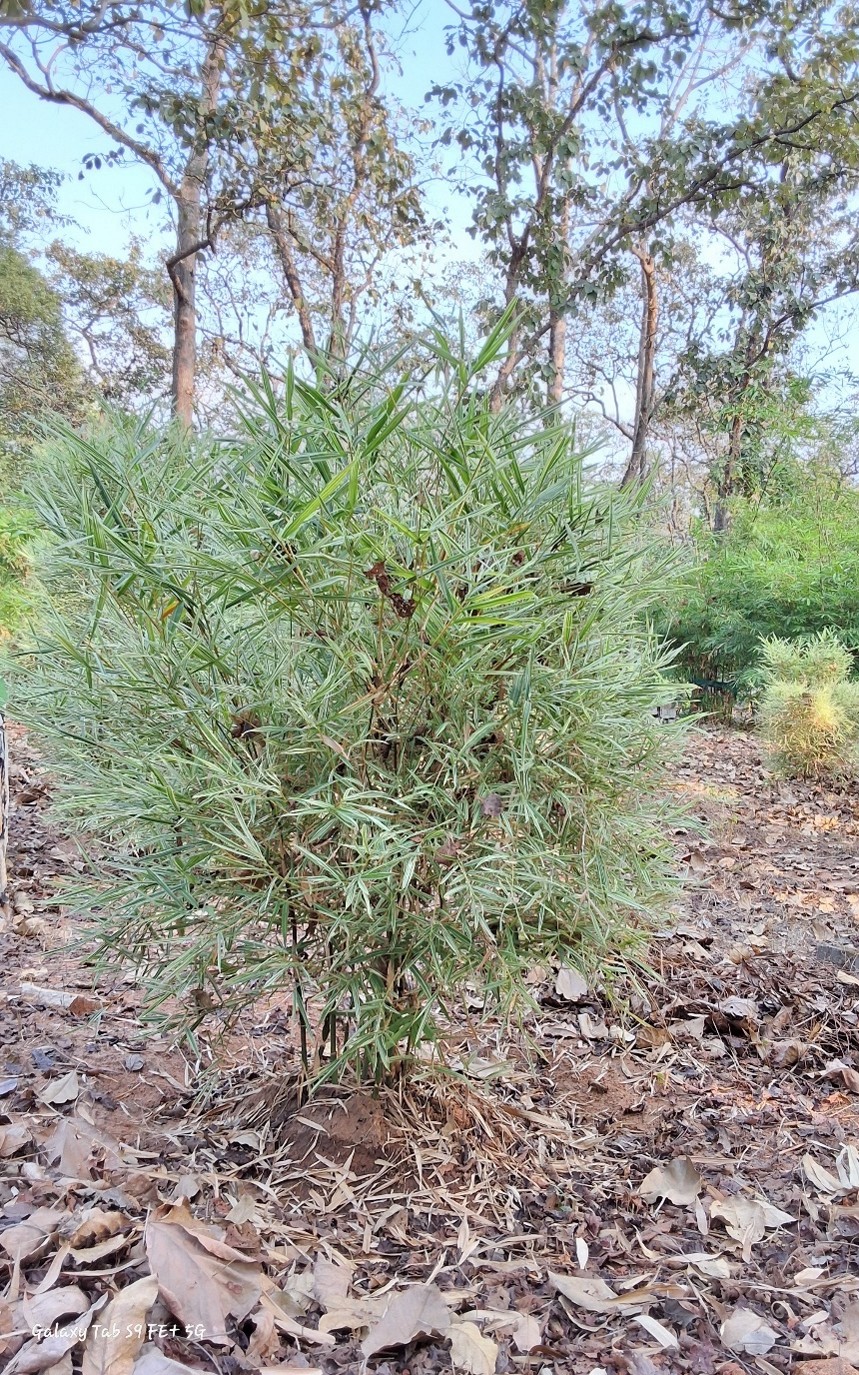Sasa fortunei

Sasa fortunei
Sasa fortunei commonly known as Fortune’s Bamboo in English, is also called ムツウシ竹 (Mutsuushi Take) in Japanese. Native to the northern parts of Honshu, Japan, it is commonly found in mountain forests and areas near streams or rivers. This bamboo species has been introduced to other temperate regions for ornamental and landscaping purposes.
Sasa fortunei is a clumping, dense, and non-invasive bamboo that typically grows to a height of 1.5 to 2.5 meters, with a diameter ranging from 1 to 2 cm. The culms are green to yellowish-green, with internodes measuring 4 to 8 cm. The culm sheath is greenish when young but turns light brown as it ages. The adaxial surface of the culm is glabrous, while the abaxial surface is covered with fine, soft hairs, and the margins are ciliate.
The leaves of Sasa fortunei are narrow lanceolate, with a pointed tip. They range in length from 8 to 15 cm and in breadth from 2 to 4 cm. The leaves are glossy green, stiff, and feature pronounced parallel venation, giving them a distinct appearance.
This bamboo species thrives best in temperate to subtropical climates, growing at altitudes of 200 to 800 meters above sea level. It prefers moist, well-drained soils rich in organic matter and can tolerate slightly acidic to neutral pH, though it prefers slightly acidic soils.
The inflorescence of Sasa fortunei is a small panicle with less showy flowers compared to other bamboo species. The flowers are small and inconspicuous, clustered in terminal spikes. The flowering glumes are tiny, and the plant has 3 to 6 stamens, mostly hidden within the glumes. Sasa fortunei flowers at irregular intervals, typically once every 30 to 50 years, with slow and sporadic seed germination, making propagation through seeds challenging.
Propagation of Sasa fortunei is most commonly done through culm cuttings of mature culms or rhizome division of mature clumps. Seed propagation is less common due to the irregularity of flowering and low seed viability.
This bamboo is used for ornamental planting, especially for gardens and landscaping, due to its attractive foliage and compact growth habit. It is also employed in erosion control, particularly in hilly and mountainous regions, thanks to its dense root system. Additionally, Sasa fortunei serves as a low-maintenance ground cover in shaded or semi-shaded areas. It is occasionally used for crafting small baskets or decorative items.
In summary, Sasa fortunei is a versatile bamboo suitable for ornamental planting, erosion control, and ground cover. It thrives in moist, well-drained soils and can be propagated via culm cuttings or rhizome division, with slower seed germination making it a less common method of propagation.
Listen Audio:
Need assistance? BRTC Faculty